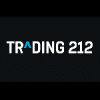The new rate for Series I Bonds starting on Nov. 1 will be 5.27% – a combination of a 1.3% fixed rate and a 3.94% inflation rate. This increase in fixed rate is significant, as it is the highest since 2007, according to Ken Tumin, editor of DepositAccounts.com.
Investors were drawn to Series I bonds during a period of high inflation due to the attractive rate of return, which peaked at an annualized rate of 9.62%. This rate surpassed any other options available in the market at that time. However, the current rates are not as lucrative. Even with a 0% fixed rate, the rate you would receive is only 3.94%, as explained by David Enna, editor of Tipwatch.com.
I-bond rates are a composite of two components. The first is an inflation-adjusted rate, which changes every six months based on CPI data. The second is a fixed rate that remains constant throughout the bond’s tenure. Those who purchased bonds during the high inflation period received a 0% fixed rate.
Nowadays, investors purchasing bonds would receive a fixed rate of 1.3% for as long as they hold their investment. This ensures that even if interest rates and inflation reach their lowest points again, investors will still earn at least 1.3% on their investment. Compared to the days when most cash earned less than 1% interest in savings, CDs, or Treasury bills, this represents a favorable deal. Furthermore, if inflation rises again, investors would receive the inflation rate in addition to the fixed rate of 1.3%. In the event that a 9.62% rate is ever achieved again, investors would actually earn 10.92% on their cash.
Overall, Series I Bonds offer a strong fixed rate with inflation protection, providing investors with the potential for consistent returns in varying market conditions.
Understanding the Nuances of Investing in I Bonds
I bonds are a popular investment option for individuals looking to grow their savings while minimizing risk. However, it is essential to have a clear understanding of the rules and restrictions associated with these bonds before diving in.
Purchase Limits and Strategies
As an investor, you are restricted to purchasing a maximum of $10,000 worth of I bonds per calendar year. However, it’s important to note that this limit is per individual. This means that if you take advantage of the opportunity in 2023, you can potentially purchase another $10,000 in I bonds the following year.
If you wish to increase your purchase amount even further, there are a few tactics you can employ. For instance, consider buying I bonds as gifts for others. These bonds can be redeemed by the recipient as long as they have not utilized their individual purchase limit. Additionally, purchasing through business entities and trusts offers another avenue to expand your investment. Lastly, utilizing your tax refund to purchase up to $5,000 in paper I bonds can be a smart move as the tax year draws to a close.
Mindful of Cash-Out Restrictions
While being a long-term holder of I bonds can be advantageous, it’s crucial to have an exit strategy in place due to cash-out restrictions.
Firstly, you must hold onto your I bonds for at least one year before cashing them out. Furthermore, if you decide to cash out before five years have elapsed, you will forfeit the last three months of interest earned.
It’s worth noting that interest on I bonds is taxable at the federal level. However, it remains untaxed at the state and local levels unless the funds are used for specific qualified expenses such as educational payments.
Crafting a Strategic Approach
Seasoned experts in the field of I bond investments, like Enna, have developed a strategy that involves selling any zero percent I bonds acquired previously and reinvesting the proceeds into the current bond offerings. By doing so, investors who made their purchases in 2021 or early 2022, when rates were at their peak, can ensure they have surpassed the required one-year holding period.
Navigating the intricacies of I bonds requires careful consideration and attention to detail. However, by adhering to the established guidelines and exploring strategic approaches, investors have an opportunity to maximize their investment potential and achieve financial growth.
Evaluating Interest Rates
If you visit websites like eyebonds.info or check your own account at TreasuryDirect.gov, you will be able to view the specifics of your interest schedule based on the time of your purchase. It is important to note that your interest rate will change every six months, relative to your own purchase date, rather than being influenced by the official November to May announcement of the new rate.
By understanding this, you can strategically time your sale and purchase of I-bonds in order to minimize any potential loss of interest. The current I-bond rate, which will be available for sale from November 1, will remain in effect until the end of April. This provides ample time for you to devise a plan that suits your financial goals.








Leave a Reply